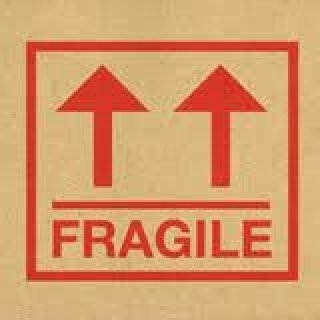The term “fragile states” is much abused.
Policymakers, development researchers, politicians, and the media seem to think that every country experiencing a period of instability or bothered by certain governance problems is “fragile.” As a result, they group a wide range of countries experiencing vastly different types of problems together—creating a mass of confusion in the process.
Such thinking means that the term as currently used has very little value as an analytical tool. Instead it has become a catchall phrase to explain any situation that seems “fragile” even if the fragility is likely to be ephemeral. It also means that states that are structurally fragile but that have none of the most obvious symptoms of fragility (such as Syria before 2011) do not get considered as one.
The Arab Spring shows the vacuousness of this approach. Before 2011, few of the countries currently in turmoil were considered fragile. Now almost all of them are. How can both these things be true?
A country ought to be either fragile or not—and find it hard to jump from one side of the ledger to the other. If states were analyzed with this aim in mind, how we group them would change dramatically.
The Middle East contains two types of countries—cohesive entities that are rather resilient and divided entities that are anything but. The former were not and are not fragile states, but transition countries that ought to come out of the current situation rather quickly, if not necessarily smoothly. The latter, on the other hand, were and are fragile and are likely to face instability for years to come.
The difference lies in 1) their degree of social cohesion/political identity fragmentation; and 2) their level of government capacity/institutional strength. As I wrote in Fixing Fragile States, only countries that are both sociopolitically divided (by ethnicity, religion, clan, etc.) and lack a reasonably effective government apparatus are structurally fragile. Structural conditions do not change easily—even during an Arab Spring.
Tunisia and Egypt are transition countries, not fragile states. They are likely to be the main beneficiaries of the Arab Spring, because their cohesion and state institutions make it much easier for them both to negotiate a new set of rules on political power and to implement such rules in an equitable fashion. (Despite its current turmoil, Egypt’s main actors will find a way to live together much faster than Syria’s.)
The contrast with other Arab Spring countries could not be greater. States such as Syria and Libya (and Lebanon and Iraq) gained independence lacking both a sense of national solidarity and a group of people with the experience to organize a state that could create it. There were, after all, no Syrians and Libyans (or Lebanese and Iraqis) before World War I. As a result, they have been forced to both develop a new national identity while trying to build the elements of a new system of state governance—at the same time. They were fragile long before the Arab Spring and will remain so for years to come.
Adopting an analytical approach that focuses on these two issues alone is much more useful than looking at the various fragile states lists that have proliferated in recent years. Although they are supposed to simplify the problem by using a set of quantitative indicators to identify countries, they complicate it by confusing results on various governance indicators with fragility. This method offers a misleading map of the fragile world because, for the most part, it defines and measures fragility by looking at its symptoms and not its causes.
Moreover, many of the indicators offer a misleading portrait of country resilience because they are based on Western notions of “good governance” and assume that poor governance is a leading indicator of fragility. But some countries (such as China, Vietnam, Thailand, Cambodia, South Korea, and Taiwan at one point or another) that score poorly on indicators of good governance are in fact quite inclusive and sufficiently well governed to ensure that they remain stable. They may be corrupt and hold elections that unfairly advantage the political party in charge, but these things do not necessarily indicate that they are structurally fragile.
These indicators failed to project which Arab states were most susceptible to revolt—and which ones will have the hardest time trying to recover from it. Many countries that previously appeared quite robust, at least in terms of their positions on lists of fragile states, were anything but. The 2011 Failed States Index ranked Syria as the 48th most fragile state in the world, but its complex ethnic and religious landscape has always made it far more fragile than it appeared. The explosion of violence in Syria that the regime has struggled desperately to contain was inevitable given the country’s internal sociopolitical dynamics and weak state. Neither Libya nor Bahrain appeared in the 2011 Failed States Index.
Whether a country is in transition or fragile matters tremendously to policymakers, analysts, diplomats, and practitioners. Transition countries are able to adopt the typical prescription put forth by the international community to countries in need of assistance. They can move rapidly towards elections, introduce economic reforms, focus on upgrading government ministries, and so on. But fragile states, which have much more deeply entrenched problems, are not well positioned to adopt this standard approach. Elections may yield conflict. Changes in policy alone are unlikely to improve economies. A too narrow focus on the central government may aggravate not reduce dysfunction. In such places, a much more creative approach is necessary, as should be evident by the failures of past international efforts in places such as Afghanistan, Somalia, and the DRC.
The international community has tried for at least a decade to put together a coherent approach to fragile states. It has mostly failed because actors have refused to see the problem of fragility for what it is—a question of history, identity, and inappropriate institutions. Defining fragility more accurately is a prerequisite for understanding and reducing it.




